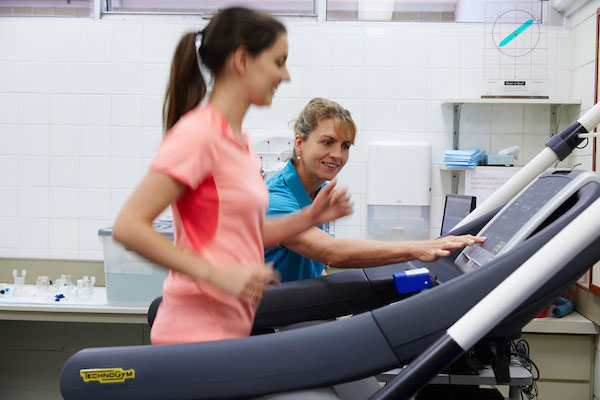Our Sleep and Activity Special Interest Group is able to investigate areas of human sleep and sleep disorders, physical activity and inactivity. The group has a range of measures on our participants relating to sleep behaviours, sleep disorders, cranio-facial measurements (3D photography), physical activity, sedentary behaviour, and even TV watching and use of screen technology devices across different ages and generations within the Raine Study.
SIG Leaders:
A/Prof Joanne McVeigh, Curtin University, University of Witwatersrand, South Africa
Dr Nigel McArdle, The University of Western Australia.
Key findings over the last 30 years have included:
Using information collected from the Raine Study participants, researchers found that having sleep problems from childhood to adolescence predicts behavioural difficulties later in life, and that people who participate in sports and watch TV for less than 14h/week across childhood and adolescence have better physical health in young adulthood. Researchers were also able to identify factors that influence how much physical activity and sedentary behavior people engage with, as well as different patterns of activity for each gender in young adults, which can help inform programs to improve activity patterns.
A trajectory characterized by less than 14 h/week TV viewing across childhood and adolescence predicts lower body fat in young adulthood.
- McVeigh JA, Smith A, Howie EK, Straker L. Trajectories of television watching from childhood to early adulthood and their association with body composition and mental health outcomes in young adults. PloS One. 2016;11:e0152879.
Participation in sports across childhood and adolescence predicts better physical health in young adulthood.
- Howie EK, McVeigh JA, Smith AJ, Straker LM. Organized sport trajectories from childhood to adolescence and health associations. Medicine and Science in Sports and Exercise. 2016;48:1331-39.
- McVeigh JA, Howie EK, Zhu K, Walsh JP, Straker L. Organized Sport Participation From Childhood to Adolescence Is Associated With Bone Mass in Young Adults From the Raine Study. Journal of Bone and Mineral Research. 2019;34(1):67-74.
Higher screen time exposure in early childhood predicts lower physical activity and higher body fat in later childhood but not in adolescence.
- Hands BP, Chivers PT, Parker HE, Beilin L, Kendall G, Larkin D. The associations between physical activity, screen time and weight from 6 to 14 yrs: The Raine Study. Journal of Science and Medicine in Sport. 2011;14:397–403.
Two types of sleep problems trajectories from childhood to adolescence were identified and predictive behavioural difficulties in later life.
- Wang B, Isensee C, Becker A, Wong J, Eastwood PR, Huang R, Runions KC, Stewart RM, Meyer T, Brüni LG, Zepf FD, Rothenberger A. Developmental Trajectories of Sleep Problems from Childhood to Adolescence Both Predict and Are Predicted by Emotional and Behavioral Problems. Frontiers in Psychology. 2016;7:1874.
There were strong associations found between reported musculoskeletal pain and restless legs syndrome in young adults.
- Hoogwout SJ, Paananen MV, Smith AJ, Beales DJ, O’Sullivan PB, Straker LM, Eastwood PR, McArdle N, Champion D. Musculoskeletal pain is associated with restless legs syndrome in young adults. BMC Musculoskeletal disorders. 2015;16:294.
An algorithm was created and validated to temporally align Raine Study data from activity monitor and laboratory sleep study, which allows for more accurate and detailed sleep/wake detections algorithms to be developed.
- Trevenen ML, Murray K, Turlach BA, Straker LM, Eastwood PR. Development and validation of an algorithm to temporally align polysomnography and actigraphy data. Biomedical Physics and Engineering Express. 2018;4:0205014
Five patterns of activity were identified for each gender in young adults, which can help design targeted interventions to enhance or modulate activity patterns.
- Howie EK, Smith AL, McVeigh JA, Straker LM. Accelerometer-Derived Activity Phenotypes in Young Adults: a Latent Class Analysis. International Journal of Behavioral Medicine. 2018;25(5):558-68.
Different factors were associated with positive levels of activity in young Australian adult women and men, and interventions to increase physical activity and decrease sedentary activity in young adults need to specifically consider the life stage of young adults.
- Howie EK, McVeigh JA, Winkler EAH, Healy GN, Bucks RS, Eastwood PR, Straker LM. Correlates of physical activity and sedentary time in young adults: the Western Australian Pregnancy Cohort (Raine) Study. BMC Public Health. 2018;18:916

